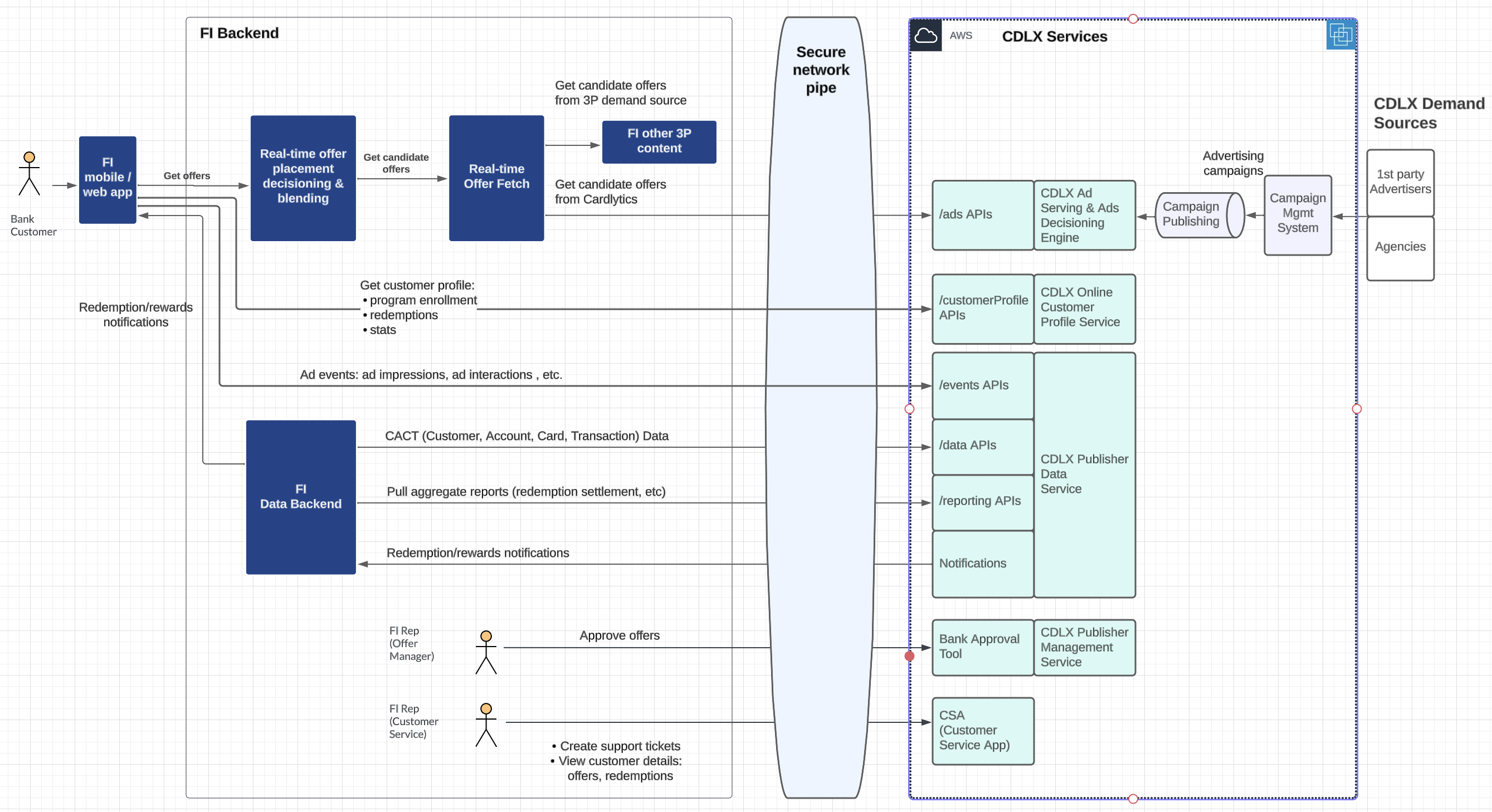Understanding the Data Model and Flow
Anatomy of the Flow diagram
At a high level the Data Model and Flow diagram depicts how a user is shown offers in an app or a website.
It also illustrates how that offer is propagated through a Financial Institution's (FI) backend across the public internet and then into Cardlytic's private services network.
At a lower level it demonstrates the process by which the Cardlytics Campaign Publishing and Management systems decide which offers to return, using the CDLX Ad Serving & Ads Decisioning Engine.

Integrator Focus
What integrators must focus on, however, is determining which parameters to pass in. In this case, calling get ad offers from the getAds endpoint. Beyond that, integrators must focus on calls related to the Customer profile, as described in the accompanying API technical documentation.
User Scopes
In the next section of the data flow, you'll see the scope of a user. A token is provided to the scope of a particular user, which includes the user's internal ID.
When you make a call to get a Customer profile, you'll see the redemptions they've made or the accounts they have, with information about their onboarded state.
Ad Events, Impressions & Ingestion
Another part of the flow occurs in a way that is invisible to the user. Ad events come into play, as a result of a user viewing an ad, clicking on it and activating it. When these ad events occur, as an integrator, you'll send your API and it will send back impressions to the Cardlytics system, where those events will be recorded as impressions on the Cardlytics backend and where the system will affirm: yes, a person viewed a particular ad or interacted with that ad and activated it.
Typically, a Financial Institution informs CDLX about their customer account and card data and that information is pushed to the Cardlytics system through the CDLX secure network pipe and then it comes through the CDLX data APIs, and then is ingested into the CDLX data lake.